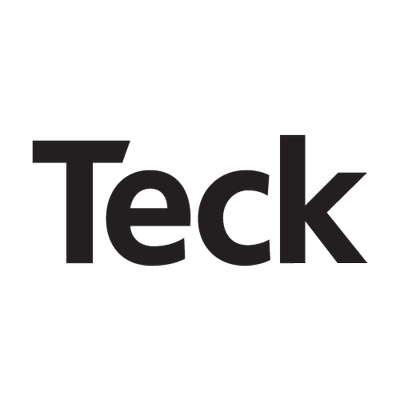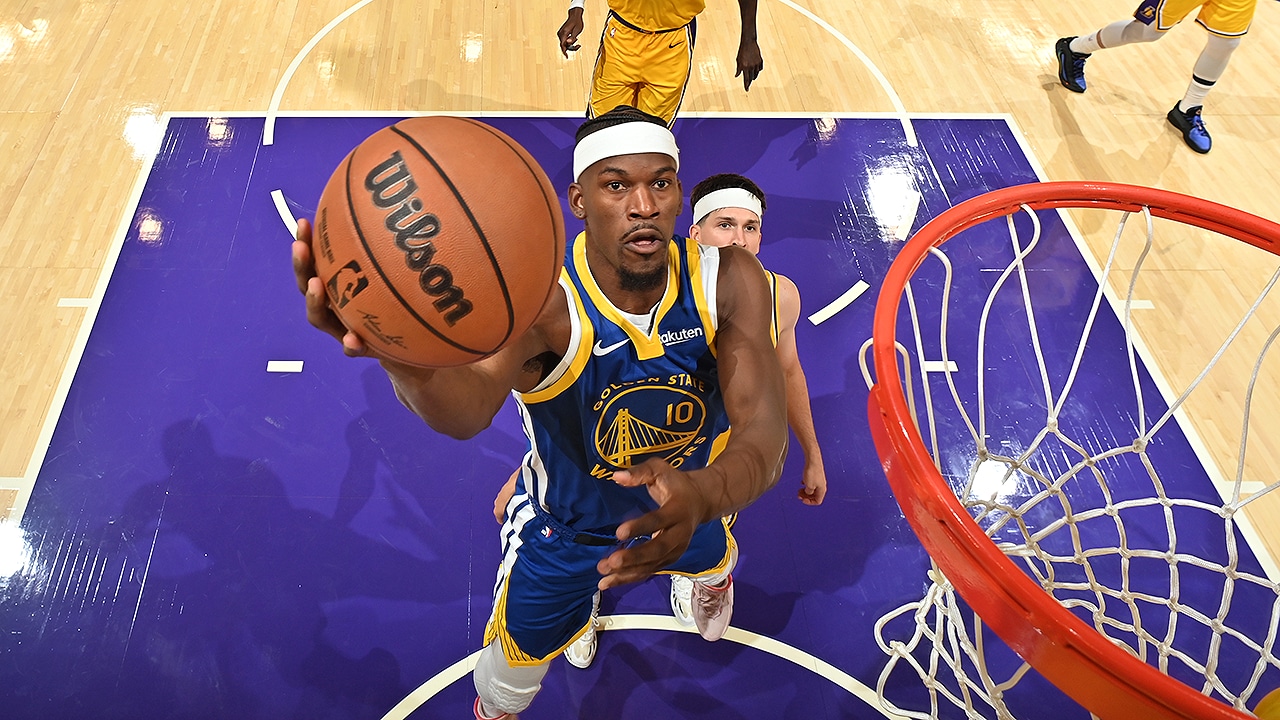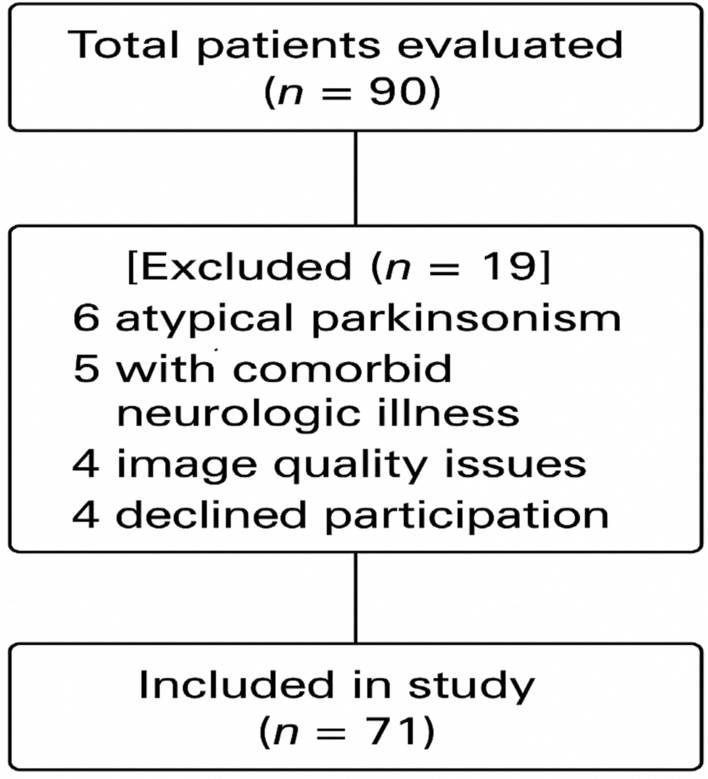Merger of equals to create new global critical minerals champion and unlock substantial value
Vancouver, B.C. – Teck Resources Limited (TSX: TECK.A and TECK.B, NYSE: TECK) (Teck) today announced its unaudited third quarter results for 2025.
“The merger of equals between Teck and Anglo American announced this quarter is a unique opportunity to create a global leader in critical minerals and a top five copper producer,” said Jonathan Price, President and CEO. “The combination will unlock significant value for shareholders through integration of Quebrada Blanca and Collahuasi and meaningful corporate synergies, offering a compelling high-quality, copper-focused investment opportunity. In addition, we completed a Comprehensive Operational Review to ensure our business plans are grounded in demonstrated performance. Our focus moving forward is on disciplined execution and completion of the merger.”
Highlights
- On September 9, 2025, Teck and Anglo American plc announced an agreement to combine the two companies in a merger of equals (the Merger) to form the Anglo Teck group (“Anglo Teck”), a global critical minerals champion headquartered in Canada. Both Anglo American and Teck believe the Merger will be highly attractive for their respective shareholders and stakeholders, enhancing portfolio quality, financial and operational resilience and strategic positioning.
- The Merger is expected to deliver annual pre-tax synergies of approximately US$800 million, with approximately 80% expected to be realized on a run-rate basis by the end of the second year following completion. Anglo Teck will also work with stakeholders to optimize the value of the adjacent Collahuasi and Quebrada Blanca assets to realize an annual average underlying EBITDA 1 uplift of US$1.4 billion (100% basis).
- On October 7, 2025, we announced completion of our Comprehensive Operational Review and Updated Outlook, with an update on the progress of the Quebrada Blanca (QB) Action Plan.
- Adjusted EBITDA1 of $1.2 billion in Q3 2025 was $185 million higher than the same period last year, primarily driven by higher copper and zinc prices and increased by-product revenues. Our profit from continuing operations before taxes was $289 million in Q3 2025.
- Adjusted profit from continuing operations attributable to shareholders1 was $372 million, or $0.76 per share, in Q3 2025. Our profit from continuing operations attributable to shareholders was $281 million or $0.58 per share.
- Our strong balance sheet provides resilience to market uncertainty, with liquidity as at October 21, 2025 of $9.5 billion, including $5.3 billion of cash.
- Our copper segment generated gross profit before depreciation and amortization1 of $740 million in the third quarter compared to $604 million a year ago, primarily driven by higher copper prices (averaging US$4.44 per pound in the third quarter) and significantly lower smelter processing charges. Copper sales of 110,300 tonnes in Q3 2025 were similar to year ago. Gross profit from our copper business was $355 million in the third quarter.
- Our zinc segment generated gross profit before depreciation and amortization1 of $454 million in the third quarter, compared to $358 million a year ago. The increase was primarily due to improved profitability at our Trail Operations and strong zinc sales volumes from Red Dog of 272,800 tonnes following a successful shipping season, which exceeded our previously disclosed guidance range of 200,000 to 250,000 tonnes. Gross profit from our zinc business was $305 million in the third quarter.
Note: 1. This is a non-GAAP financial measure or ratio. See “Use of Non-GAAP Financial Measures and Ratios” for further information.
Financial Summary Q3 2025
|
Financial Metrics (CAD$ in millions, except per share data) |
Q3 2025 |
Q3 2024 |
|
Revenue |
$ 3,385 |
$ 2,858 |
|
Gross profit |
$ 660 |
$ 478 |
|
Gross profit before depreciation and amortization1 |
$ 1,194 |
$ 962 |
|
Profit (loss) from continuing operations before taxes |
$ 289 |
$ (759) |
|
Adjusted EBITDA1 |
$ 1,171 |
$ 986 |
|
Profit (loss) from continuing operations attributable to shareholders |
$ 281 |
$ (748) |
|
$ 372 |
$ 314 |
|
|
Basic earnings (loss) per share from continuing operations |
$ 0.58 |
$ (1.45) |
|
Diluted earnings (loss) per share from continuing operations |
$ 0.57 |
$ (1.45) |
|
Adjusted basic earnings per share from continuing operations1 |
$ 0.76 |
$ 0.61 |
|
Adjusted diluted earnings per share from continuing operations1 |
$ 0.76 |
$ 0.60 |
Note 1:This is a non-GAAP financial measure or ratio. See “Use of Non-GAAP Financial Measures and Ratios” for further information.
Key Updates
Teck and Anglo American plc Merger of Equals
- On September 9, 2025, we announced that we had entered into an arrangement agreement with Anglo American plc with respect to the Merger between Anglo American plc and Teck to form Anglo Teck, a global critical minerals champion and top five global copper producer, headquartered in Canada and expected to offer investors more than 70% exposure to copper.
- Both Anglo American plc and Teck believe the Merger will be highly attractive for both companies’ shareholders and stakeholders, enhancing portfolio quality, resilience and strategic positioning. Bringing together the strengths of both companies, Anglo Teck will leverage proven capabilities in technical and operational excellence, sustainability, product marketing and project execution to deliver significant, value-accretive growth through the cycle.
- The Merger is expected to deliver annual pre-tax synergies of approximately US$800 million by the end of the fourth year following completion of the transaction, with approximately 80% expected to be realized on a run-rate basis by the end of the second year following completion, driven by economies of scale, operational efficiencies, and commercial and functional excellence. Anglo Teck will also work with key stakeholders and partners in Collahuasi and Quebrada Blanca to optimize the value of these adjacent assets to realize US$1.4 billion (100% basis) of annual underlying EBITDA1 uplift on an average pre-tax annual basis from 2030-2049, primarily through operational integration and optimization of Collahuasi and Quebrada Blanca. This will build on Anglo American’s success with similar adjacency partnerships in Brazil and elsewhere in Chile.
- Completion of the transaction is subject to a number of customary conditions, including applicable court, shareholder and regulatory approvals. The Merger is expected to close within 12-18 months from announcement.
QB Action Plan Update and Q3 Performance
- Production at QB continues to be constrained by the pace of development of the tailings management facility (TMF), requiring downtime in the concentrator to manage the rate of tailings rise. Our priority remains enabling safe, unconstrained production by raising the crest height of the dam. This is being delivered through construction of additional rock benches while continuing to progress efforts to improve sand drainage to support construction of the sand dam.
- Ultimately, a sand wedge will be constructed using hydraulically placed sand, which will enable steady-state TMF operation. While sand currently being produced meets design specifications, slow drainage caused by the presence of ultra-fines has delayed progress in development of the sand wedge. As a result, the mechanical construction of rock benches continues to be required, which has led to additional downtime through 2025, particularly in Q3, and is expected to result in incremental downtime in 2026, as reflected in our 2026 annual production guidance for QB. It is currently expected that from 2027 onwards, the TMF development should no longer be a constraint on throughput levels.
- Significant work has been undertaken through 2025 to improve sand drainage times with some improvement realized to date. Further progress is needed to reach design targets, and two key initiatives were advanced in Q3 2025:
-
- Ultra-fines removal: Test work in collaboration with cyclone manufacturers and third-party experts has shown positive results in improving sand drainage through the removal of ultra-fines. As previously disclosed, we are modifying the cyclone facility this quarter to incorporate alternative technologies designed to remove ultra-fine material.
- Refinement of sand placement techniques: Improvements to paddock design, and sand placement and drying, are also being implemented to enhance drainage efficiency.
- Q3 2025 copper production at QB was 39,600 tonnes, which was 12,900 tonnes lower than the same period last year. As outlined above, ongoing TMF development has constrained production through 2025 resulting in additional downtime of the concentrator, particularly in Q3 2025. September production was 5,800 tonnes, impacted by 20 days of downtime required to raise the tailings dam crest.
- Molybdenum production at QB was 480 tonnes in the third quarter as ramp-up of the molybdenum plant continued. Molybdenum production was constrained by downtime in the concentrator due to ongoing TMF development work, outlined above.
- The shiploader at QB’s port facility is under repair, as previously disclosed, and is expected to return to service in the first quarter of 2026. The outage is not expected to impact production as we have been shipping concentrate through our alternative port arrangements and have maximized shipments to local customers.
- On October 7, 2025, we announced updates to our previously disclosed guidance. Our annual 2025 copper production for QB is expected to be 170,000 to 190,000 tonnes and our annual molybdenum production for QB is expected to be 1,700 to 2,500 tonnes. QB net cash unit costs1 for 2025 are expected to be between US$2.65 – $3.00 per pound.
Safety and Sustainability Leadership
- Our High-Potential Incident (HPI) Frequency rate remains low at 0.06 for the nine months ended September 30, 2025, trending 50% below the 2024 annual rate of 0.12.
Guidance
- On October 7, 2025, we announced completion of our Comprehensive Operational Review and Updated Outlook, which resulted in revisions to our annual production guidance for QB and Highland Valley Copper for 2025-2028, Red Dog for 2026-2028, and Trail for 2026. Further, as a result of changes to our production guidance, we provided updated guidance for 2025 annual net cash unit costs1 for QB and our copper segment and provided 2026 annual net cash unit cost1 guidance for our copper and zinc segments.
- here have been no changes to our guidance disclosed on October 7, 2025.
- Our guidance is outlined in summary below and our usual guidance tables, including three-year production guidance, can be found on pages 28–31 of Teck’s third quarter results for 2025 at the link below.
Note: 1. This is a non-GAAP financial measure or ratio. See “Use of Non-GAAP Financial Measures and Ratios” for further information.
|
2025 Guidance – Summary |
Current |
|
Production Guidance |
|
|
Copper (000’s tonnes) |
415 – 465 |
|
Zinc (000’s tonnes) |
525 – 575 |
|
Refined zinc (000’s tonnes) |
190 – 230 |
|
Sales Guidance – Q4 2025 |
|
|
Red Dog zinc in concentrate sales (000’s tonnes) |
125 – 140 |
|
Unit Cost Guidance |
|
|
Copper net cash unit costs (US$/lb.)1 |
2.05 – 2.30 |
|
Zinc net cash unit costs (US$/lb.)1 |
0.45 – 0.55 |
Note: This is a non-GAAP financial measure or ratio. See “Use of Non-GAAP Financial Measures and Ratios” for further information.
All dollar amounts expressed in this news release are in Canadian dollars unless otherwise noted.
Click here to view Teck’s full third quarter results for 2025.
WEBCAST
Teck will host an Investor Conference Call to discuss its Q3/2025 financial results at 11:00 AM Eastern time, 8:00 AM Pacific time, on October 22, 2025. A live audio webcast of the conference call, together with supporting presentation slides, will be available at our website at www.teck.com. The webcast will be archived at www.teck.com.
REFERENCE
Emma Chapman, Vice President, Investor Relations: +44 207.509.6576
Dale Steeves, Director, External Communications: +1 236.987.7405
USE OF NON-GAAP FINANCIAL MEASURES AND RATIOS
Our annual financial statements are prepared in accordance with IFRS ® Accounting Standards as issued
by the International Accounting Standards Board (IASB). Our interim financial results are prepared in
accordance with IAS 34, Interim Financial Reporting (IAS 34). This document refers to a number of non-
GAAP financial measures and non-GAAP ratios, which are not measures recognized under IFRS
Accounting Standards and do not have a standardized meaning prescribed by IFRS Accounting Standards
or by Generally Accepted Accounting Principles (GAAP) in the United States.
The non-GAAP financial measures and non-GAAP ratios described below do not have standardized
meanings under IFRS Accounting Standards, may differ from those used by other issuers, and may not be
comparable to similar financial measures and ratios reported by other issuers. These financial measures
and ratios have been derived from our financial statements and applied on a consistent basis as
appropriate. We disclose these financial measures and ratios because we believe they assist readers in
understanding the results of our operations and financial position and provide further information about our
financial results to investors. These measures should not be considered in isolation or used as a substitute
for other measures of performance prepared in accordance with IFRS Accounting Standards.
Adjusted profit from continuing operations attributable to shareholders – For adjusted profit from
continuing operations attributable to shareholders, we adjust profit from continuing operations attributable
to shareholders as reported to remove the after-tax effect of certain types of transactions that reflect
measurement changes on our balance sheet or are not indicative of our normal operating activities.
EBITDA – EBITDA is profit before net finance expense, provision for income taxes, and depreciation and
amortization.
Adjusted EBITDA – Adjusted EBITDA is EBITDA before the pre-tax effect of the adjustments that we
make to adjusted profit from continuing operations attributable to shareholders as described above.
Adjusted profit from continuing operations attributable to shareholders, EBITDA and Adjusted EBITDA
highlight items and allow us and readers to analyze the rest of our results more clearly. We believe that
disclosing these measures assists readers in understanding the ongoing cash-generating potential of our
business in order to provide liquidity to fund working capital needs, service outstanding debt, fund future
capital expenditures and investment opportunities, and pay dividends.
Adjusted basic earnings per share from continuing operations – Adjusted basic earnings per share
from continuing operations is adjusted profit from continuing operations attributable to shareholders
divided by average number of shares outstanding in the period.
Adjusted diluted earnings per share from continuing operations – Adjusted diluted earnings per
share from continuing operations is adjusted profit from continuing operations attributable to shareholders
divided by average number of fully diluted shares in a period.
Gross profit before depreciation and amortization – Gross profit before depreciation and amortization
is gross profit with depreciation and amortization expense added back. We believe this measure assists us
and readers to assess our ability to generate cash flow from our reportable segments or overall
operations.
Total cash unit costs – Total cash unit costs for our copper and zinc operations includes adjusted cash
costs of sales, as described below, plus the smelter and refining charges added back in determining
adjusted revenue. This presentation allows a comparison of total cash unit costs, including smelter
charges, to the underlying price of copper or zinc in order to assess the margin for the mine on a per unit
basis.
Net cash unit costs – Net cash unit costs of principal product, after deducting co-product and by-product
margins, are also a common industry measure. By deducting the co- and by-product margin per unit of the
principal product, the margin for the mine on a per unit basis may be presented in a single metric for
comparison to other operations.
Adjusted cash cost of sales – Adjusted cash cost of sales for our copper and zinc operations is defined
as the cost of the product delivered to the port of shipment, excluding depreciation and amortization
charges, any one-time collective agreement charges or inventory write-down provisions and by-product
cost of sales. It is common practice in the industry to exclude depreciation and amortization, as these
costs are non-cash, and discounted cash flow valuation models used in the industry substitute
expectations of future capital spending for these amounts.
Profit (Loss) from Continuing Operations Attributable to Shareholders and Adjusted Profit from
Continuing Operations Attributable to Shareholders
| (CAD$ in millions) | Three months ended September 30 |
Nine months ended September 30 |
||
|---|---|---|---|---|
| 2025 | 2024 | 2025 | 2024 | |
| $ 281 | $ (748) | $ 857 | $ (852) | |
|
Add (deduct) on an after-tax basis: |
||||
|
Asset impairment |
— | 828 | — | 828 |
|
QB variable consideration to IMSA and Codelco |
34 | (33) | (16) | 9 |
|
Environmental costs |
33 | 15 | 31 | 9 |
|
Share-based compensation |
13 | 26 | 33 | 67 |
|
Commodity derivatives |
(36) | (9) | (59) | (36) |
|
Foreign exchange losses |
(10) | 41 | 15 | 71 |
|
Tax items |
— | 203 | (82) | 229 |
|
Other |
57 | (9) | 83 | 48 |
|
Adjusted profit from continuing operations attributable to shareholders |
$ 372 | $ 314 | $ 862 | $ 373 |
|
Basic earnings (loss) per share from continuing operations |
$ 0.58 | $ (1.45) | $ 1.73 | $ (1.64) |
|
Diluted earnings (loss) per share from continuing operations |
$ 0.57 | $ (1.45) | $ 1.72 | $ (1.64) |
|
Adjusted basic earnings per share from continuing operations |
$ 0.76 | $ 0.61 | $ 1.74 | $ 0.72 |
|
Adjusted diluted earnings per share from continuing operations |
$ 0.76 | $ 0.60 | $ 1.73 | $ 0.71 |
Reconciliation of Basic Earnings (Loss) per share from Continuing Operations to Adjusted Basic
Earnings per share from Continuing Operations
| (Per share amounts) | Three months ended September 30, |
Nine months ended September 30, |
||
|---|---|---|---|---|
| 2025 | 2024 | 2025 | 2024 | |
| Basic earnings (loss) per share from continuing operations | $ 0.58 | $ (1.45) | $ 1.73 | $ (1.64) |
|
Add (deduct) on an after-tax basis: |
||||
|
Asset impairment |
— | 1.60 | — | 1.60 |
|
QB variable consideration to IMSA and Codelco |
0.07 | (0.06) | (0.03) | 0.01 |
|
Environmental costs |
0.07 | 0.03 | 0.06 | 0.02 |
|
Share-based compensation |
0.03 | 0.05 | 0.07 | 0.13 |
|
Commodity derivatives |
(0.07) | (0.02) | (0.12) | (0.07) |
|
Foreign exchange losses |
(0.02) | 0.08 | 0.03 | 0.14 |
|
Tax items |
— | 0.39 | (0.16) | 0.44 |
|
Other |
0.10 | (0.01) | 0.16 | 0.09 |
|
|
$ 0.76 | $ 0.61 | $ 1.74 |
$ 0.72 |
Reconciliation of Diluted Earnings (Loss) per share from Continuing Operations to Adjusted
Diluted Earnings per share from Continuing Operations
| (Per share amounts) | Three months ended September 30, |
Nine months ended September 30, |
||
|---|---|---|---|---|
| 2025 | 2024 | 2025 | 2024 | |
| Diluted earnings (loss) per share from continuing operations | $ 0.57 | $ (1.45) | $ 1.72 | $ (1.64) |
|
Add (deduct) on an after-tax basis: |
||||
|
Asset impairment |
— | 1.59 | — | 1.58 |
| QB variable consideration to IMSA and Codelco | 0.07 | (0.06) | (0.03) | 0.02 |
|
Environmental costs |
0.07 | 0.03 | 0.06 | 0.02 |
|
Share-based compensation |
0.03 | 0.05 | 0.07 | 0.13 |
|
Commodity derivatives |
(0.07) | (0.02) | (0.12) | (0.07) |
|
Foreign exchange losses |
(0.02) | 0.08 | 0.03 | 0.14 |
|
Tax items |
— | 0.39 | (0.16) | 0.44 |
|
Other |
0.11 | (0.01) | 0.16 | 0.09 |
|
Adjusted diluted earnings per share from continuing operations |
$ 0.76 | $ 0.60 | $ 1.73 | $ 0.71 |
Reconciliation of EBITDA and Adjusted EBITDA
| (CAD$ in millions) | Three months ended September 30, |
Nine months ended September 30, |
||
|---|---|---|---|---|
| 2025 | 2024 | 2025 | 2024 | |
| Profit (loss) from continuing operations before taxes | $ 289 | $ (759) | $ 864 | $ (974) |
| Net finance expense | 175 | 153 | 469 | 578 |
| Depreciation and amortization | 554 | 498 | 1,344 | 1,203 |
|
EBITDA |
1,018 | (108) | 2,677 | 807 |
|
Add (deduct): |
||||
|
Asset impairment |
— | 1,053 | — | 1,053 |
|
QB variable consideration to IMSA and Codelco |
58 | (55) | (26) | 0.14 |
|
Environmental costs |
40 | 20 | 42 | 8 |
|
Share-based compensation |
17 | 34 | 41 | 86 |
|
Commodity derivatives |
(49) | (13) | (81) | (50) |
|
Foreign exchange (gains) losses |
(9) | 56 | 16 | 89 |
|
Other |
96 | (1) | 151 | 91 |
|
Adjusted EBITDA |
$ 1,171 | $ 986 | $ 2,820 | $ 2,098 |
Reconciliation of Gross Profit Before Depreciation and Amortization
| (CAD$ in millions) | Three months ended September 30, |
Nine months ended September 30, |
||
|---|---|---|---|---|
| 2025 | 2024 | 2025 | 2024 | |
| Gross profit | $ 660 | $ 478 | $ 1667 | $ 1,065 |
| Depreciation and amortization | 534 | 484 | 1288 | 1,155 |
| Gross profit before depreciation and amortization | $ 1,194 | $ 962 | $ 2,955 | $ 2,220 |
|
Reported as: |
||||
|
Copper |
||||
|
Quebrada Blanca |
$ 178 | $ 178 | $ 580 | $ 462 |
|
Highland Valley Copper |
189 | 89 | 564 | 371 |
| Antamina | 295 | 287 | 731 | 763 |
|
Carmen de Andacollo |
78 | 48 | 240 | 69 |
|
Other |
— | 2 | 2 | 4 |
| 740 | 604 | 2,117 | 1,669 | |
| Zinc | ||||
|
Trail Operations |
54 | 26 | 176 | (3) |
|
Red Dog |
390 | 333 | 646 | 548 |
|
Other |
10 | (1) | 16 | 6 |
|
|
454 | 358 | 838 | 551 |
|
Gross profit before depreciation and amortization |
$ 1,194 | $ 962 | $ 2,955 | $ 2,220 |
CAUTIONARY STATEMENT ON FORWARD-LOOKING STATEMENTS
This news release contains certain forward-looking information and forward-looking statements as defined in applicable securities laws (collectively referred to as forward-looking statements). These statements relate to future events or our future performance. All statements other than statements of historical fact are forward-looking statements. The use of any of the words “anticipate”, “can”, “could”, “plan”, “continue”, “estimate”, “expect”, “may”, “will”, “would”, “project”, “predict”, “likely”, “potential”, “should”, “believe” and similar expressions is intended to identify forward-looking statements. These statements involve known and unknown risks, uncertainties and other factors that may cause actual results or events to differ materially from those anticipated in such forward-looking statements. These statements speak only as of the date of this news release.
These forward-looking statements include, but are not limited to, statements concerning: our focus and strategy, including being a pure-play energy transition metals company; anticipated global and regional supply, demand and market outlook for our commodities; our business, assets, and strategy going forward, including with respect to future and ongoing project development; our ability to complete the merger with Anglo American, including timing of completion and our ability to receive applicable approvals; our expectations with respect to the merger with Anglo American; our ability to achieve corporate synergies with Anglo American and potential synergies between QB and Collahuasi; our ability to execute our copper growth strategy in a value accretive manner; the timing and format of any cash returns to shareholders; our expectations regarding cost, timing and completion of HVC MLE; our expectations regarding our Comprehensive Operational Review and updated outlook, including any progress of the QB Action Plan; our expectations regarding cost, timing and completion of TMF development initiatives and installation of remaining permanent tailings infrastructure and water management at our QB operations; the occurrence and length of any potential downtime at QB; our ability to raise improve and support construction of the sand dam, including the construction of a sand wedge; our expectations regarding improved sand drainage, including paddock design and sand placement; the results of third-party expert recommendations for our QB Action Plan; our expectations with respect to improved recoveries at QB and achieve design rates in the mine, concentrator and molybdenum plant; the continued ramp-up to consistent production and future optimization and debottlenecking of our QB operations; the timing of the restart of the shiploader at the QB port facility; our expectations with respect to mitigation of potential production or shipping disruptions or increased costs related to the QB shiploader outage; our expectations with respect to continued availability of alternative port arrangements for QB; our expectations with respect to the successful restart of the Carmen de Andacollo SAG mill and its ability to continue to operate as expected; our expectations with respect to Teck’s updated operating strategy and production at Trail; our expectations with respect to the production and sales volume at Red Dog; our expectations with respect to the occurrence, timing and length of required maintenance shutdowns and equipment replacement; expectations regarding inflationary pressures and our ability to manage controllable operating expenditures; the uncertainty surrounding the status of various worldwide tariffs and their impact on the mining industry; expectations with respect to the potential impact of any tariffs, countervailing duties or other trade restrictions, including the impact on trade flows, demand for our products and general economic conditions and our ability to manage our sale arrangements to minimize any impacts or maintain compliance with any exemptions provided; expectations with respect to execution of our copper growth strategy, including the timing and occurrence of any sanction decisions and prioritization and amount of planned growth capital expenditures; expectations regarding advancement of our copper growth portfolio projects, including advancement of study, permitting, execution planning, detailed engineering and design, risk mitigation, and advanced early works, community and Indigenous engagement, completion of updated cost estimates, tendering processes, and timing for receipt of permits related to QB optimization, QB Asset Expansion and the HVC MLE, San Nicolás, and Zafranal projects, as applicable; our expectations and results with respect to the royalties on our operations; expectations with respect to timing and outcome of the regulatory approvals process for our copper growth projects; expectations for copper growth capital expenditures to progress our medium- to long-term projects, including Galore Creek, Schaft Creek, NewRange, and NuevaUnion; our expectations regarding safety rates at our operations; expectations regarding our effective tax rate; expectations regarding after-tax impairments; liquidity and availability of borrowings under our credit facilities; requirements to post and our ability to obtain additional credit for posting security for reclamation at our sites; expectations for our general and administration and research and innovation costs and costs related to the enterprise resource planning system; profit and loss expectations; copper price market trends and expectations; our expectations relating to Teck’s buy back of shares and ability to continue to declare dividends; mineral grades; all guidance appearing in this document including but not limited to the production, sales, cost, unit cost, capital expenditure, capitalized stripping, operating outlook, and other guidance under the headings “Guidance” and “Outlook” and as discussed elsewhere in the various reportable segment sections; our expectations regarding inflationary pressures and increased key input costs; and expectations regarding the adoption of new accounting standards and the impact of new accounting developments.
These statements are based on a number of assumptions, including, but not limited to, assumptions disclosed elsewhere in this document and assumptions regarding general business and economic conditions, interest rates, commodity and power prices; the completion of the merger with Anglo American; completion of the QB Action Plan; the potential corporate synergies between Anglo American and Teck; acts of foreign or domestic governments and the outcome of legal proceedings, including expectations with respect to the claims for indemnification from NSC and Glencore in connection with the sale of the steelmaking coal business; the imposition of tariffs, import or export restrictions, or other trade barriers or retaliatory measures by foreign or domestic governments; the continued operation of QB in accordance with our expectations; our ability to advance TMF development initiatives as expected and the occurrence and length of any potential maintenance downtime; expectations with respect to the restart of the shiploader at QB; expectations with respect to availability of alternative port arrangements; expectations and assumptions with respect to HVC MLE capital cost estimate and expected project economics; the possibility that our business may not perform as expected or in a manner consistent with historical performance; the supply and demand for, deliveries of, and the level and volatility of prices of copper and zinc and our other metals and minerals, as well as steel, crude oil, natural gas and other petroleum products; the timing of the receipt of permits and other regulatory and governmental approvals for our development projects and other operations, including mine extensions; positive results from the studies on our expansion and development projects; our ability to secure adequate transportation, including rail and port services, for our products; our costs of production and our production and productivity levels, as well as those of our competitors; continuing availability of water and power resources for our operations; changes in credit market conditions and conditions in financial markets generally; the availability of funding to refinance our borrowings as they become due or to finance our development projects on reasonable terms; availability of letters of credit and other forms of financial assurance acceptable to regulators for reclamation and other bonding requirements; our ability to procure equipment and operating supplies in sufficient quantities and on a timely basis; the availability of qualified employees and contractors for our operations, including our new developments and our ability to attract and retain skilled employees; the satisfactory negotiation of collective agreements with unionized employees; the impact of changes in Canadian-U.S. dollar, Canadian dollar-Chilean Peso and other foreign exchange rates on our costs and results; engineering and construction timetables and capital costs for our development and expansion projects; our ability to develop technology and obtain the benefits of technology for our operations and development projects; closure costs; environmental compliance costs; market competition; the accuracy of our mineral reserve and resource estimates (including with respect to size, grade and recoverability) and the geological, operational and price assumptions on which these are based; tax benefits and statutory and effective tax rates; the outcome of our copper, zinc and lead concentrate treatment and refining charge negotiations with customers; the resolution of environmental and other proceedings or disputes; our ability to obtain, comply with and renew permits, licenses and leases in a timely manner; and our ongoing relations with our employees and with our business and joint venture partners.
Statements regarding the availability of our credit facilities are based on assumptions that we will be able to satisfy the conditions for borrowing at the time of a borrowing request and that the facilities are not otherwise terminated or accelerated due to an event of default. Assumptions regarding the costs and benefits of our projects include assumptions that the relevant project is constructed, commissioned and operated in accordance with current expectations. Expectations regarding our operations are based on numerous assumptions regarding the operations. Our Guidance tables include disclosure and footnotes with further assumptions relating to our guidance, and assumptions for certain other forward-looking statements accompany those statements within the document. Statements concerning future production costs or volumes are based on numerous assumptions regarding operating matters and on assumptions that demand for products develops as anticipated, that customers and other counterparties perform their contractual obligations, that operating and capital plans will not be disrupted by issues such as mechanical failure, unavailability of parts and supplies, labour disturbances, interruption in transportation or utilities, or adverse weather conditions, and that there are no material unanticipated variations in the cost of energy or supplies. The foregoing list of assumptions is not exhaustive. Events or circumstances could cause actual results to vary materially.
Factors that may cause actual results to vary materially include, but are not limited to, changes in commodity and power prices; changes in market demand for our products; changes in interest and currency exchange rates; acts of governments and the outcome of legal proceedings, including indemnification claims; ability for Teck to satisfy all conditions precedent for closing of the merger; ability for Teck to receive necessary approvals to complete the merger; costs related to the merger; the imposition of tariffs, import or export restrictions, or other trade barriers or retaliatory measures by foreign or domestic governments; inaccurate geological and metallurgical assumptions (including with respect to the size, grade and recoverability of mineral reserves and resources); operational difficulties (including failure of plant, equipment or processes to operate in accordance with specifications or expectations, cost escalation, unavailability of labour, materials and equipment); government action or delays in the receipt of government approvals; changes in royalty or tax rates; industrial disturbances or other job action; adverse weather conditions; unanticipated events related to health, safety and environmental matters; union labour disputes; political risk; social unrest; failure of customers or counterparties (including logistics suppliers) to perform their contractual obligations; changes in our credit ratings; unanticipated increases in costs to construct our development projects; difficulty in obtaining permits; inability to address concerns regarding permits or environmental impact assessments; changes in laws and mining regulations; and changes or further deterioration in general economic conditions. The amount and timing of capital expenditures is dependent upon, among other matters, being able to secure permits, equipment, supplies, materials and labour on a timely basis and at expected costs. Certain operations and projects are not controlled by us; schedules and costs may be adjusted by our partners, and timing of spending and operation of the operation or project is not in our control. Certain of our other operations and projects are operated through joint arrangements where we may not have control over all decisions, which may cause outcomes to differ from current expectations. Ongoing monitoring may reveal unexpected environmental conditions at our operations and projects that could require additional remedial measures. Production at our QB and Red Dog Operations may also be impacted by water levels at site. Sales to China may be impacted by general and specific port restrictions, Chinese regulation and policies, and normal production and operating risks.
We assume no obligation to update forward-looking statements except as required under securities laws. Further information concerning risks, assumptions and uncertainties associated with these forward-looking statements and our business can be found in our Annual Information Form for the year ended December 31, 2024 filed under our profile on SEDAR+ (www.sedarplus.ca) and on EDGAR (www.sec.gov) under cover of Form 40-F, as well as subsequent filings that can also be found under our profile.
Scientific and technical information in this quarterly report regarding our material properties was reviewed, approved and verified by Jason Sangha, P.Eng., Vice President, Technical & Planning, an officer of Teck and a Qualified Person as defined under National Instrument 43-101.
25-26-TR







